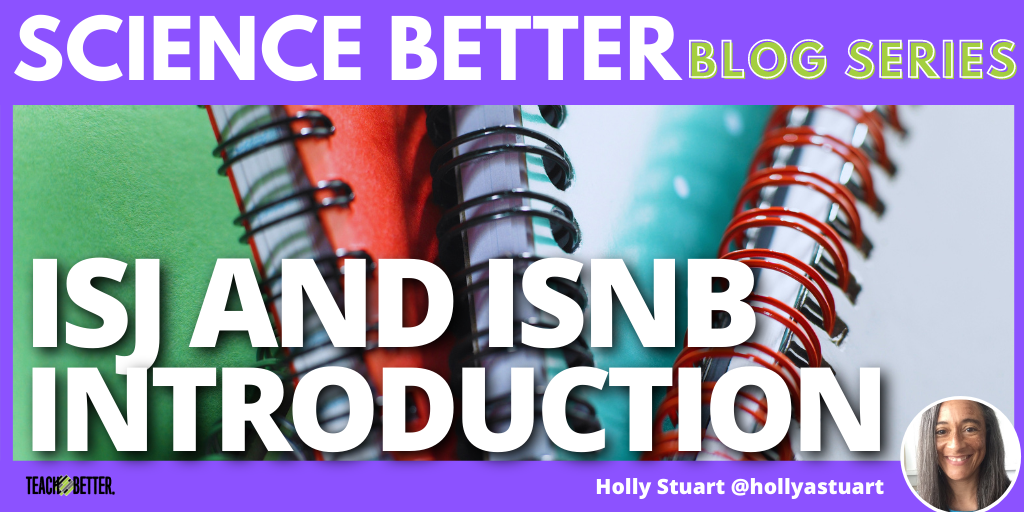TL;DR:
- Science is a messy process that leads to understanding.
- Students need to learn and appreciate the messy process in addition to the end result.
- Interactive science journals (ISJ) and interactive science notebooks (ISNB) are tools that will help students understand the difference between the process and the end result.
“Take chances, make mistakes, get MESSY!”
– Ms. Frizzle, The Magic School Bus by Joanna Cole
Messiness Leads to Understanding
Science, real science, is messy. It involves asking questions, developing hypotheses, experimentation, trial and error, data collection, analysis of data, and the formation of conclusions that ultimately lead to more questions. It is rarely a straight line from observation to question to the establishment of a scientific theory or scientific law. And yet, science is presented and taught in a linear fashion.
As a result, students don’t understand how science is actually done because they only see the end result. I want to change that. I want students to make mistakes and to experience productive struggles. And I want them to write down an idea, test it, cross it out, make adjustments to their original thought, and learn about the process of scientific discovery. And the way that I do that is through the use of interactive science journals (ISJs) and interactive science notebooks (ISNBs).
Journal vs. Notebook – What is the Difference?
Students in my classroom learn that the ISJ and the ISNB serve two very different purposes. The ISNB houses scientific facts. Things like notes, illustrations that clearly demonstrate the science concept being learned, quick labs with clear expected results, worksheets, and foldables/graphic organizers provide a structure to illustrate relationships between concepts. These are the artifacts that contain definitive right or wrong answers on them.
Students are learning mistakes are ok and revision is necessary. Click To TweetThe ISJ, on the other hand, is the home of the messy part of science learning. It helps students connect to the process of learning and the development of ideas. Things like our International Baccalaureate (IB) connections to global concepts, IB rubrics (so they can self assess their work), reflections, warm-ups and exit tickets (where students oftentimes will write down an incorrect answer, have a discussion, and then cross it out to revise their original thought), mini-lessons/demonstrations (where students will make predictions about what will happen), goal setting, and responses to mastery level questions from the grid.
(If you are not familiar with The Grid Method, you can take a free introductory course to learn more about this student-paced mastery learning framework that can revolutionize your teaching practice!)
[scroll down to keep reading]
Value the Process and the End Result
This is my first year with a clear structured way of using both an ISJ and an ISNB, and I can already see a shift in my students’ perspectives on science. As I am writing this, we are three weeks into the school year, and we are on page 20 in the ISJ, but only page 7 in the ISNB. Without me having to state it, students are noticing that most of the work is going in their journals and that only after working through the scientific process will they be ready to put clear, concise information into their ISNB. What a powerful message for them!
Students are learning mistakes are ok and revision is necessary. They are learning collaboration and the sharing of ideas with their group will lead to greater understanding for all. Students are learning that by reflecting on their words and actions, they can make better decisions in the future. And they are learning to set high and lofty goals for themselves in their science class, work toward them on a daily basis, and actually achieve their goals.
To be clear, I feel that both of these tools are important to improve student learning and appreciation of science.
After all, the point of the scientific process is to eventually lead to clear information. The ISNBs that my students end up with at the end of the year are always amazing to see.
Several students told me they kept their notebooks through high school because it reminded them of the value of being organized, showed them how much they learned, and they just really liked the way they looked! We make them colorful to add visual interest, and many students said their handwriting improved while in my class because they knew the ISNB was a resource they could use on quizzes. (Side note: Yes, I give open note quizzes. I don’t focus on my students’ ability to memorize and regurgitate information; I focus on their ability to apply the information in new and innovative ways.)
ISJ and ISNB: Continuing the Journey
Future Science Better blog posts will focus on how I set up ISJs and ISNBs in my classroom. My current best practices are a result of what I have learned over the years through trial and error (and some of it was messy, much like the scientific process!). And I am still learning and adapting to my students’ needs.
Until then, please reach out and connect with me to share how you use ISJs and ISNBs in your classrooms. What are your best practices, questions, and thoughts about these fundamental tools for helping our students to Science Better?
About Holly Stuart
Holly Stuart is an 8th grade science and design teacher in South Carolina. Her educational passions include finding new and innovative ways to get more students interested in STEAM, student-inspired discovery through inquiry, and learning science by doing science.
In addition to her out-of-the-box thinking in the classroom, she has successfully implemented The Grid Method into her teaching practice which led to her becoming a Teach Better Team Ambassador. Holly is married to her high school sweetheart and is a mother to three children.
When not teaching, she enjoys traveling and being outside with her family. Some of their favorite outdoor activities include hiking, running, and biking. (Holly often brings her telescope, binoculars, and microscopes with her on hikes!) Her indoor hobbies include reading, coloring, and learning more about sketchnoting and drawing.




